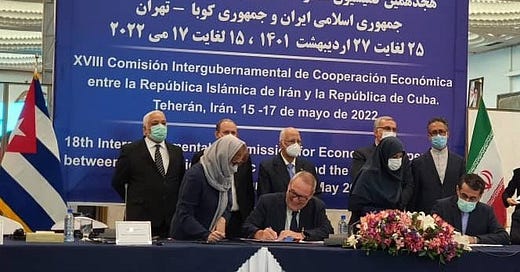For some, the relation between Cuba and Iran is a surprising development. In the ideological terrain of the global North, the two nations belong to different categories: Iran is the bad guy of the Islamic World, whereas Cuba is the bad guy of Latin America. And as everyone knows from Hollywood movies, the bad guys are brutes with everybody, including each other. So many would not anticipate that two of the world’s most sanctioned and notorious states would cooperate with one another on the basis of the moral principles that the global powers have declared and for the most part ignored.
Although unanticipated, there it is, complete with photo documentation and declarations by evidently dignified representatives of the notorious governments. Of course, the editors of the mainstream media, ever faithful servants of the global powers, decide to ignore the event, possibly with awareness that the unexpected development might cause the peoples of the North to question the false…


